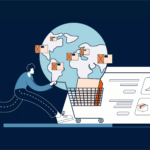- nstacksoftech
- Business, Cloud ERP, ERP, Manufacturing, Process Automation
- 4775 Views
In the ever-evolving landscape of manufacturing, the journey from traditional assembly lines to the modern cloud-based systems has been transformative. This evolution is particularly evident in the realm of Enterprise Resource Planning (ERP), a critical component that orchestrates various aspects of a manufacturing operation. This article explores the dynamic shift from assembly lines to cloud lines, highlighting the key milestones and benefits of manufacturing’s ERP evolution.


The Era of Assembly Lines:
Historically, manufacturing operations relied on assembly lines to streamline production processes. These linear systems enabled mass production, but they often lacked the flexibility and adaptability required in today’s fast-paced business environment. As technology advanced, so did the need for more sophisticated tools to manage complex workflows and data.
Rise of ERP Systems:
The advent of ERP systems marked a significant turning point in manufacturing. These integrated software solutions allowed businesses to centralize data, automate processes, and enhance overall efficiency. ERP systems provided a unified platform for managing various aspects of production, including inventory control, order processing, and resource allocation. However, early ERP systems were primarily on-premises solutions, limiting accessibility and scalability.
Transition to Cloud-Based ERP:
With the maturation of cloud technology, manufacturing embraced the shift towards cloud-based ERP solutions. Cloud ERP offered unparalleled advantages, including remote accessibility, real-time collaboration, and scalability. Manufacturers could now leverage the power of the cloud to streamline operations, improve data accuracy, and enhance decision-making processes.
Key Milestones in ERP Evolution:
- On-Premises ERP: The initial phase of ERP adoption involved on-premises installations, providing a centralized database but lacking the flexibility of cloud-based solutions.
- Hybrid ERP: As cloud technology emerged, many manufacturers adopted hybrid ERP models, integrating both on-premises and cloud solutions to balance security and accessibility.
- Full Cloud ERP: The widespread adoption of full cloud ERP systems marked a pivotal moment, enabling manufacturers to harness the benefits of remote access, automatic updates, and improved collaboration.
Benefits of Cloud-Based ERP in Manufacturing:
- Enhanced Accessibility: Cloud ERP allows manufacturers to access critical data and tools from anywhere, fostering remote collaboration and decision-making.
- Scalability: Cloud solutions offer the flexibility to scale resources up or down based on manufacturing demands, ensuring optimal performance and cost-effectiveness.
- Real-Time Insights: Manufacturers can make data-driven decisions with real-time insights provided by cloud-based ERP, leading to improved operational efficiency.
Conclusion:
The evolution of manufacturing’s ERP systems from traditional assembly lines to the cloud represents a significant leap forward in efficiency, flexibility, and accessibility. As technology continues to advance, manufacturers must stay agile and embrace the transformative power of cloud-based ERP to remain competitive in an ever-changing landscape.




